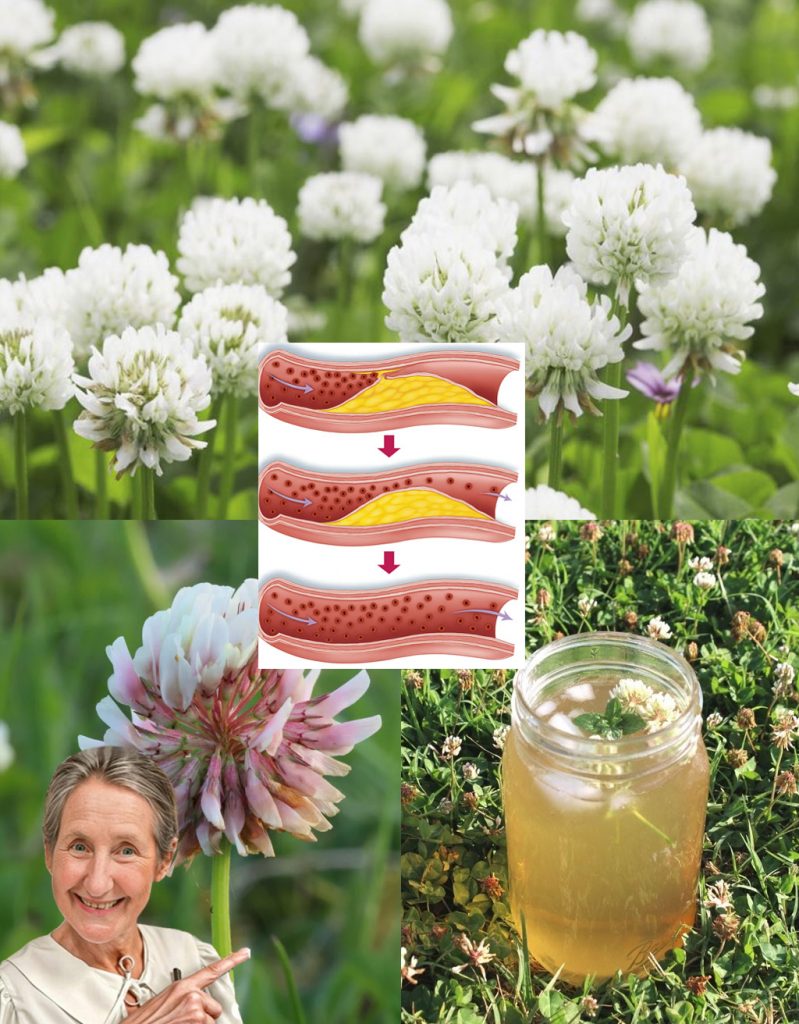How to Use White Clover (Trifolium repens) in the Most Natural and Effective Way: 15 Benefits and Homemade Uses

Have you ever walked past a patch of white clover (Trifolium repens) carpeting your lawn or a nearby field and dismissed it as just another weed? Think again! This unassuming, three-leafed plant with delicate white flowers is a treasure trove of health benefits and practical uses, quietly thriving underfoot. For centuries, herbalists and homesteaders have harnessed its potential, making it a standout natural skin care remedy and immune-boosting food. If you’re seeking natural ways to support your well-being, reduce inflammation, or even enhance your garden, white clover offers a sustainable solution right in your backyard. Here’s how to use white clover in the most natural and effective way, unveiling its 15 benefits and homemade applications as of 04:32 PM +07 on Friday, August 01, 2025.
Why White Clover Is a Hidden Wellness Wonder
White clover, a perennial legume native to Europe and now widespread globally, flourishes in grassy areas, lawns, and pastures. Its leaves, flowers, and roots are rich in vitamins C and A, minerals like calcium and potassium, and antioxidants such as isoflavones. Traditionally used in folk medicine and as a forage crop, white clover aligns with the 2025 trend toward sustainable, wild-harvested superfoods. As a detox the body naturally aid and a versatile herb, it transforms a common plant into a health ally.
15 Benefits of White Clover (Trifolium repens)
Explore the diverse ways white clover can enhance your health and lifestyle:
- Boosts Immunity: Vitamin C and antioxidants strengthen defenses against infections.
- Reduces Inflammation: Isoflavones and flavonoids soothe joint pain and swelling.
- Supports Digestive Health: Fiber promotes regular bowel movements and eases bloating.
- Enhances Skin Healing: Anti-inflammatory properties treat minor cuts, rashes, and burns.
- Improves Circulation: Potassium supports blood flow, reducing fatigue.
- Regulates Blood Sugar: May stabilize glucose levels, aiding diabetes management.
- Promotes Heart Health: Antioxidants lower cholesterol and blood pressure risk.
- Strengthens Bones: Calcium content supports bone density.
- Aids Detoxification: Diuretic effects flush toxins, supporting kidney function.
- Relieves Menstrual Cramps: Anti-spasmodic properties ease discomfort.
- Soothes Respiratory Issues: Traditionally used to ease coughs and congestion.
- Boosts Energy: B vitamins enhance metabolism and vitality.
- Supports Oral Health: Antibacterial action reduces plaque and gum inflammation.
- Improves Sleep: Mild sedative effects promote relaxation.
- Repels Garden Pests: Acts as a natural insect deterrent when planted.
These benefits position white clover as a holistic home treatment for inflammation and a garden-to-table resource.
Homemade Uses of White Clover
Incorporate white clover into your routine with these DIY beauty tips and natural methods:
- White Clover Tea for Immunity: Steep 1–2 teaspoons dried flowers and leaves (or 5–7 fresh, washed) in 1 cup hot water for 10 minutes. Drink 1–2 cups daily to boost immunity or soothe digestion.
- Poultice for Skin Healing: Crush fresh leaves and flowers, apply to minor wounds or rashes, and cover for 20 minutes to reduce inflammation.
- Infused Oil for Joints: Steep dried clover in olive oil (1:2 ratio) for 2 weeks, strain, and massage into aching joints for relief.
- Hair Rinse for Shine: Boil 1 handful of leaves in 2 cups water, cool, and use as a final rinse to nourish scalp and add luster.
- Salad Addition: Add young leaves to salads for a mild, nutritious boost.
- Garden Companion: Plant near crops to repel aphids and other pests naturally.
- Face Steam for Skin: Simmer leaves and flowers, lean over the steam with a towel for 5–10 minutes to clear pores and reduce acne.
- Natural Dye: Boil flowers to create a yellow-green dye for fabrics or crafts.
- Compress for Headaches: Soak a cloth in cooled tea, apply to temples for 15 minutes to ease tension.
Preparation Tip: Harvest young leaves and flowers from clean, pesticide-free areas in spring or summer. Rinse well and use fresh or dry for storage in an airtight container.
Growing and Sourcing White Clover
White clover grows wild in lawns, pastures, and gardens, thriving in sunny, well-drained soil. Forage from untreated areas or cultivate by planting seeds, harvesting leaves and flowers when tender. Buy dried clover from health stores, opting for organic quality.
Precautions and Considerations
Use white clover safely with these guidelines:
- Moderation: Limit tea to 1–2 cups daily to avoid mild laxative effects from excess fiber—stay hydrated.
- Allergies: Test if sensitive to legumes or Asteraceae plants; discontinue if reactions occur.
- Medical Advice: Consult a doctor if pregnant, nursing, or on blood thinners (vitamin K may interact), or if managing diabetes (may affect sugar levels).
- Contaminant Check: Ensure it’s free from pesticides or pollutants, especially if foraged near roads.
- Not a Cure: A complementary aid, not a replacement for medical treatment—seek professional guidance.
Why White Clover Is a 2025 Wellness Trend
In 2025, the focus on wild edibles and sustainable health solutions elevates white clover. Its abundance, nutrient density, and dual role as a medicinal herb and garden aid align with home treatments for inflammation and zero-waste living. As foraging gains popularity, white clover is emerging as a backyard essential.
Final Thoughts
White clover (Trifolium repens) is a remarkable plant with 15 benefits, from immunity to pest control, and 9 homemade uses that enhance health and home. As a natural skin care remedy that heals and a detox the body naturally aid, it transforms a common weed into a wellness ally. Brew a tea, craft a poultice, or plant it in your garden today—let this humble herb enrich your life naturally. Consult a professional for safety, and embrace nature’s gift for a healthier you! 🌼









